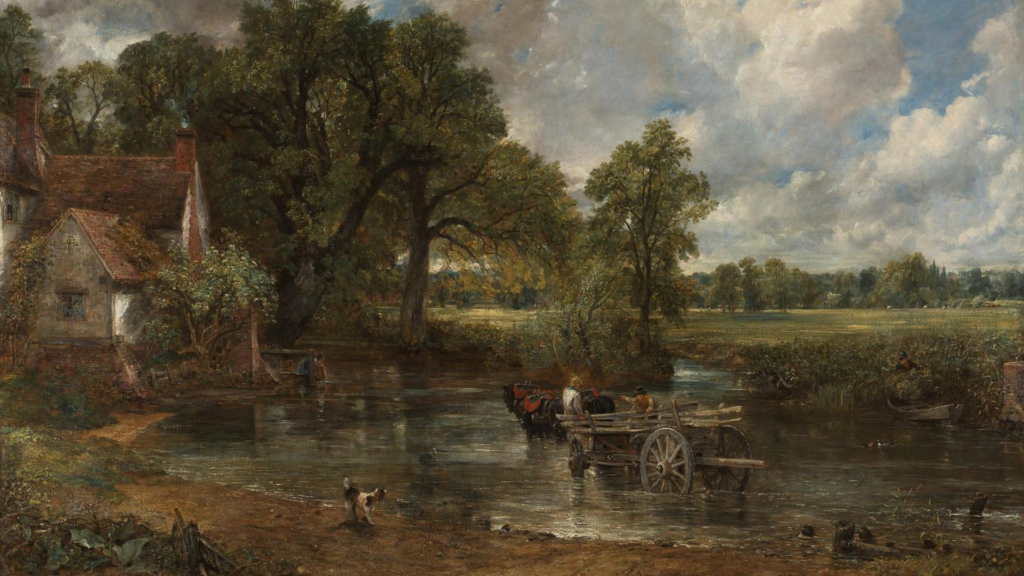
The Hay wain is by far John Constable’s most famous and well loved painting. Originating from one of his summer series of paintings, it is now displayed in the National Gallery in London. Picturing a rural scene in between Essex and Suffolk, on the river Stour which boarders Essex and Suffolk, essentially separating the two. The scene shown could have easily been created from imagination, however it is known that in fact the house on the left is a neighbours house as the Constable’s fathers’ house was just out of the frame, which was on the banks of the River Stour. Willy Lott was the neighbour and was a tenant farmer, more than likely the one pictured in the painting. The horse and cart were used as transport and for farm work, but in the heat of summer it was common for the horse and cart to be led into the river for the horse to drink and for the iron on the cart wheels to cool down after spending all day in the summer heat. Interestingly enough, Willy Lott’s cottage still stands undamaged today but none of the trees in the photo exist in modern day, which links perfectly with what romanticists were trying to ‘warn’ people about in their love and need for nature over urbanisation. This is greatly linked to the romantic movement as it was the beautification of nature and seen as the ideal. However this is not likely true with the farmer likely working dawn till dusk. This brings it back to the point that the entire Romantic movement was predominantly originated by those of a higher class and with easier lives fantasying about the ‘simple, happy country life’ believing people who were poor, were happier even though they had significantly less money, time and freedom. He was revolutionary in many different ways for example, he was one of the first people to paint trees green as previously landscapes were done by people living in the centre of the industrial revolution with smoke and smog instead of green trees they just reflected colours they saw everyday. He did this by not only having his won memories of the landscape but he also got people to send quick sketches of parts of the scenery as he was working from his own sketches and memories. He went against the time period even more by instead of being detail originated which was what was deemed as correct for the time, with some amazing artists painting each individual leaf etc, Constable used expressive brush strokes and close to mark making techniques to create this painting in a very short space of time. The brush marks instead of precise detail show the passion and emotion put into the work, like a flurry of homely colours and patterns appealing on the page rather than a more documentative art style. Constable even put the workers in the background to further how the beautiful the place, again contrasting the time but fitting in the romantic idea with most farm workers being drawn to the bigger cities and being replaced with machines instead. Having originally studied weather and Meteorology clouds were a large part of Constable’s work, in this one particularly with it’s name actually being ‘Noon’ (rather than ‘Hay Wain’ as we have come to know it) links to the romantics movement with the dramatic and important weather changes. However it is also great for the modern day historian’s as with his background and the painting name, Constable was more than likely and reflected throughout his work the clouds and weather gave an accurate idea of what time and season the painting depicted.
